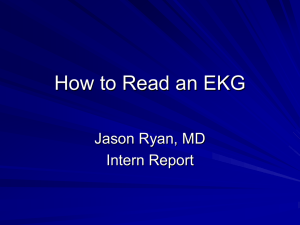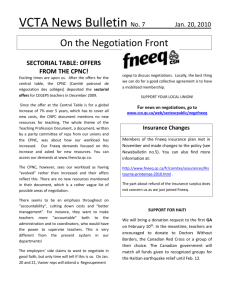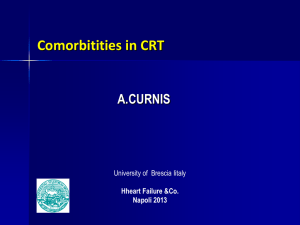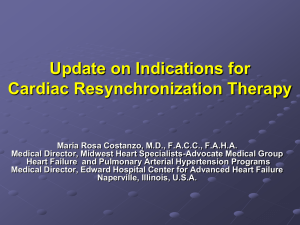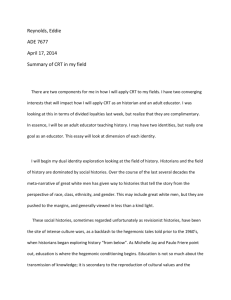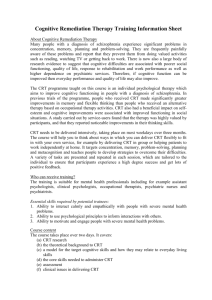How to read CRT ECGs and CRT intracardiac electrograms
advertisement
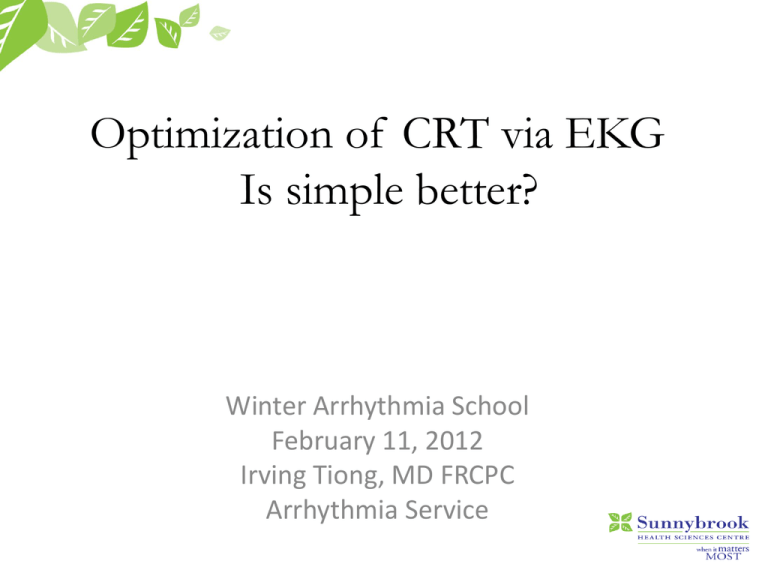
Optimization of CRT via EKG Is simple better? Winter Arrhythmia School February 11, 2012 Irving Tiong, MD FRCPC Arrhythmia Service Goals • Brief overview of EKG findings in cardiomyopathy • Brief overview on newest studies on CRT programming • Examples of CRT EKG Disclosure None Is this adequate CRT ? What about this one? Cardiac resynchronization therapy (CRT) Class 1 indications: • LVEF ≤ 30% • NYHA Class II-III • QRS ≥ 120 msec (LBBB) However only 2/3 of patients will benefit. WHY? ACC/AHA/HRS 2008 Guidelines Sweeny et al, Circulation 2011 Fantoni et al . JCE 2005 Singh et al. JACC 2005, 46 PP 48-67 Fluoroscopic view - AP Optimal LV lead placement by fluoroscopic views QRS Width and success of CRT Siphal et al, Ann Int Med, 2011 MADIT - CRT Zareba et al . Circulation 2011 Zareba et al . Circulation 2011 What about AV delay? SMART AV trial, Ellebogen et al, Circulation 2011 What to look for on the surface EKG? Sweeney et al, Circulation 2010 Sweeney et al, Circulation 2010 Other factors for achieving successs • • • • Avoid right atrial pacing Control atrial arrthythmias Avoid pacing scar Left ventricular lead placement Quantification of scar (Selvester QRS score of LBBB) Prospect - EKG Hsing et al, JCE 2011 Any difference in apical vs non apical position MADIT CRT- Singh et al, Circulation 2011 MADIT-CRT Is this adequate CRT ? What about this one? Conclusion • EKG/QRS morphology during LV lead placement • Change RV-LV delay : Lead III R – QS, Lead V1 QS – R • AV delay - perhaps programmed to AV delay of 120 msec, or 50% of native PR interval if QRS > 150 msec


